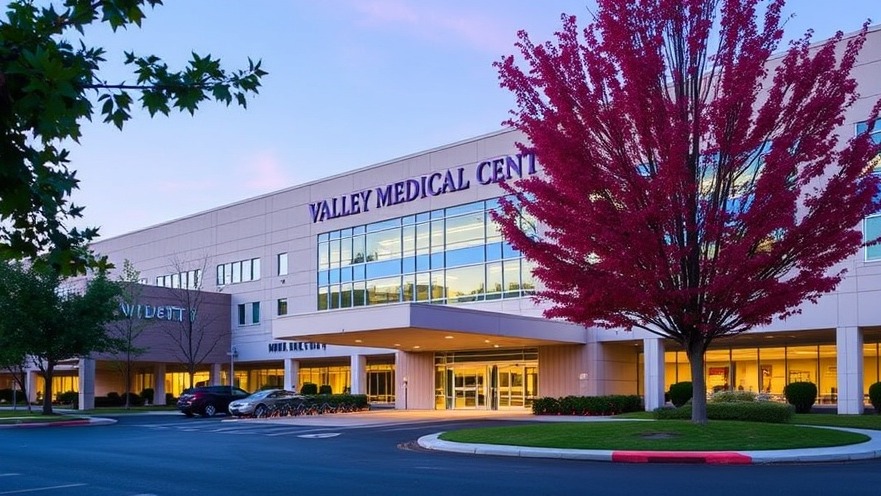
Valley Medical Center Faces Tough Choices Amid Medicaid Cuts
Valley Medical Center in Renton, Washington is grappling with significant financial challenges that have forced it into drastic operational changes. After losing federal Medicaid benefits at the end of December without prior notice, the hospital recently announced the layoff of 101 employees. These layoffs are only a part of a broader effort to restructure and address the financial turmoil that threatens essential health services in the community.
The hospital's spokesperson confirmed that service consolidations will impact approximately 50% of its workforce over the coming months. This significant reduction will include a shift towards full-time staffing models in several departments, aiming to create a more sustainable operational framework amidst a complex landscape of reimbursement uncertainties.
The Ripple Effect on Local Healthcare Services
This operational shift is more than just financial maneuvering; it carries substantial implications for community health. Valley Medical Center plans to close several crucial services, including its Northwest Pavilion inpatient units, primary care facilities, and specialized clinics in maternal fetal medicine and pediatric care by June 27. This raises concern, especially as the affordable healthcare landscape continues to evolve, which affects urban and rural health facilities alike.
As healthcare providers, supporting a broad demographic—including independent physicians, nurse practitioners, and rural health clinics—recognizing the constraints put forth by declining reimbursements from Medicare and Medicaid is vital. The consolidation of services across health systems highlights a pattern where financial viability often supersedes patient access.
The Importance of Employee Health Benefits in Preventing Hospital Closures
Amid these changes, the retention and well-being of remaining staff take center stage. Employee health benefits and retention strategies are critical for maintaining morale and operational efficiency. As practices like automation and innovative staffing models gain traction, focusing on healthcare HR strategies can help mitigate some negative impacts of such significant workforce changes.
For independent providers, adapting employee benefits, such as incorporating pre-tax health plans, can improve overall job satisfaction and retention, leading to better patient care outcomes. The looming threat of facility closures due to workforce reductions necessitates proactive planning and strategic implementation of healthcare compliance measures.
Innovative Solutions for Today's Healthcare Challenges
In light of the ongoing challenges, it may be beneficial for healthcare providers to explore effective practice automation strategies that optimize clinic workflows. AI technology, such as voice agents and phone automation, can alleviate some burden on staff while improving patient engagement. Additionally, remote therapeutic monitoring (RTM) programs can allow continuity of care for patients, ensuring they receive the services they need without the strain on physical resources.
With the integration of telehealth revenue opportunities, clinics can broaden their service offerings while maintaining profitability. Embracing healthcare business tools, including medical billing recovery and insurance underpayment solutions, will also be vital for adapting to the new standards in reimbursement practices effectively.
Looking Ahead: What This Means for Local Physicians
The crisis faced by Valley Medical Center serves as a cautionary tale for healthcare practitioners in the region. As independent physicians and healthcare providers maneuver through these changes, fostering patient relationships and engagement tools is crucial. Understanding patient needs—especially in aging populations—who often benefit from senior care solutions and aging in place can provide insights into creating sustainable practice models.
Moreover, networking among local providers, sharing resources, and collaborating on shared care initiatives can strengthen the community's healthcare fabric, making it more resilient against such upheavals.
Call to Action
As healthcare providers, your role in advocating for legislative changes and more robust Medicaid funding is crucial. Engage with local, state, and federal representatives to ensure that the financial challenges faced by hospitals do not continue to compromise patient care in your community. The future of healthcare accessibility depends on collaborative efforts and proactive measures to secure and optimize healthcare resources.
 Add Row
Add Row  Add
Add 




 Add Row
Add Row  Add
Add 

Write A Comment